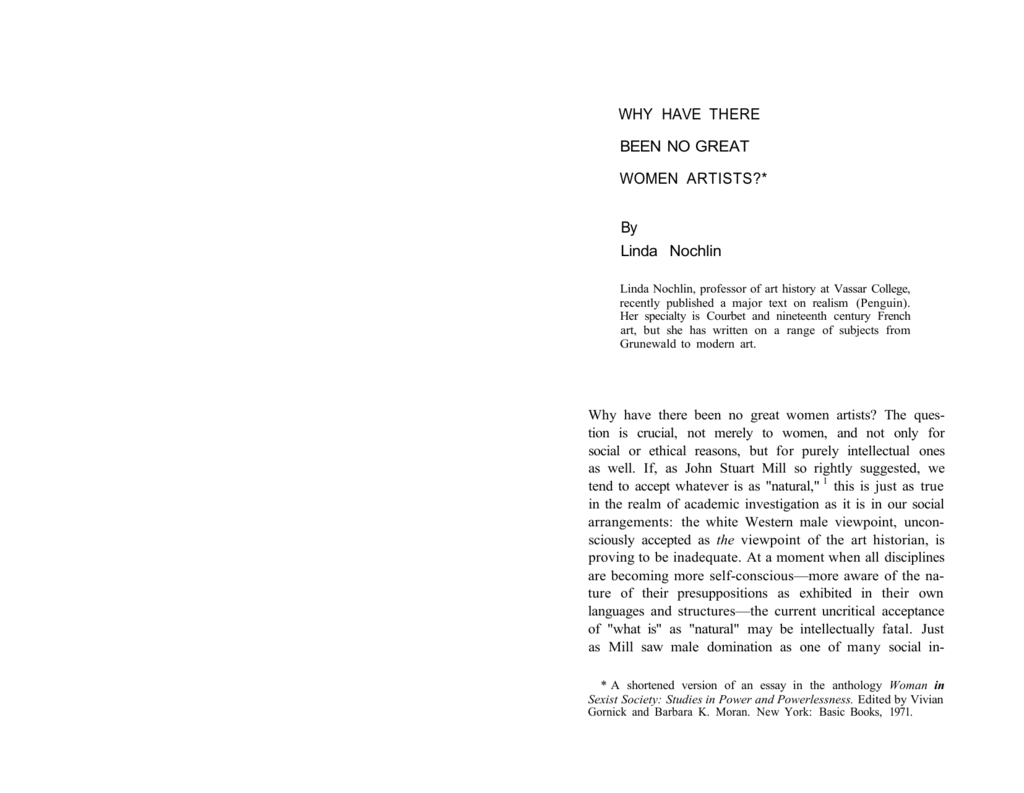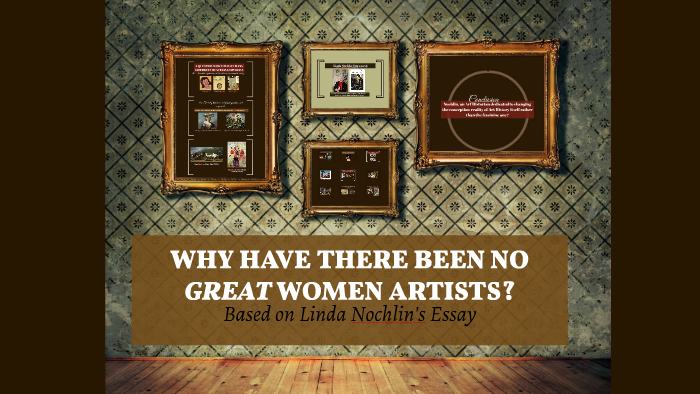

Self-interested artists, assisted by scholarly associates, established hierarchies of subject matter.

Martin Warnke ( The Court Artist: On the Ancestry of the Modern Artist) argued that such a notion does not mesh with those who worked under the patronage system: many actually sought court appointments for relief from financial worries. Nochlin’s characterization of the Romantic myth that “art is the direct, personal expression of individual emotional experience, a translation of personal life into visual terms” was never the purpose of art in the early modern era.

The issue of greatness starts with the definition of art. Which aspects of Nochlin’s essay help us ponder the question of “greatness” for females of the early modern era? We know about the social norms regulating women’s behavior, but how have art history, art criticism, the art market, and institutional practices affected women artists’ production and reception? Getting to the point Screenshot of licence exam with question about Linda Nochlin. (Full disclosure: I had the good fortune to be her student as an undergraduate.) In this 1959 photograph she leads a discussion as part of the introductory survey course. To start, I asked, how did Nochlin come to this question? She graduated in 1951 from, and later taught Art History at, Vassar, then a women’s college. the gendered language prevalent in art criticism.the purposes that what we now gather together within the term “art” served in different historic eras and.the art market: how much people will pay as an index of value in broader terms.the selection of works that populate museums and art history books.My talk could not address them all, so I chose some topics that inform how greatness was and is defined as it pertains to early modern women artists by pointing out some avenues to explore In a talk delivered at the Prado as part of a conference held January 27–28, 2020 in conjunction with the exhibition on Sofonisba Anguissola and Lavinia Fontana, I tried to reassess the issue of “greatness” with regard to women by applying Nochlin’s thesis to the Renaissance-Baroque period. Instead, she queried the determinants informing the definition of “greatness,” concluding that conditions affecting women’s lives and training-compounded by the priorities and practices of art history, art criticism, the art market, and many museums-have kept women at the margins. Nochlin admonished against arguments for including women artists who deserve to be called “great” within the existing historical and critical framework. Art and Sexual Politics: Why Have There Been No Great Women Artists? Edited by Thomas B.


 0 kommentar(er)
0 kommentar(er)
